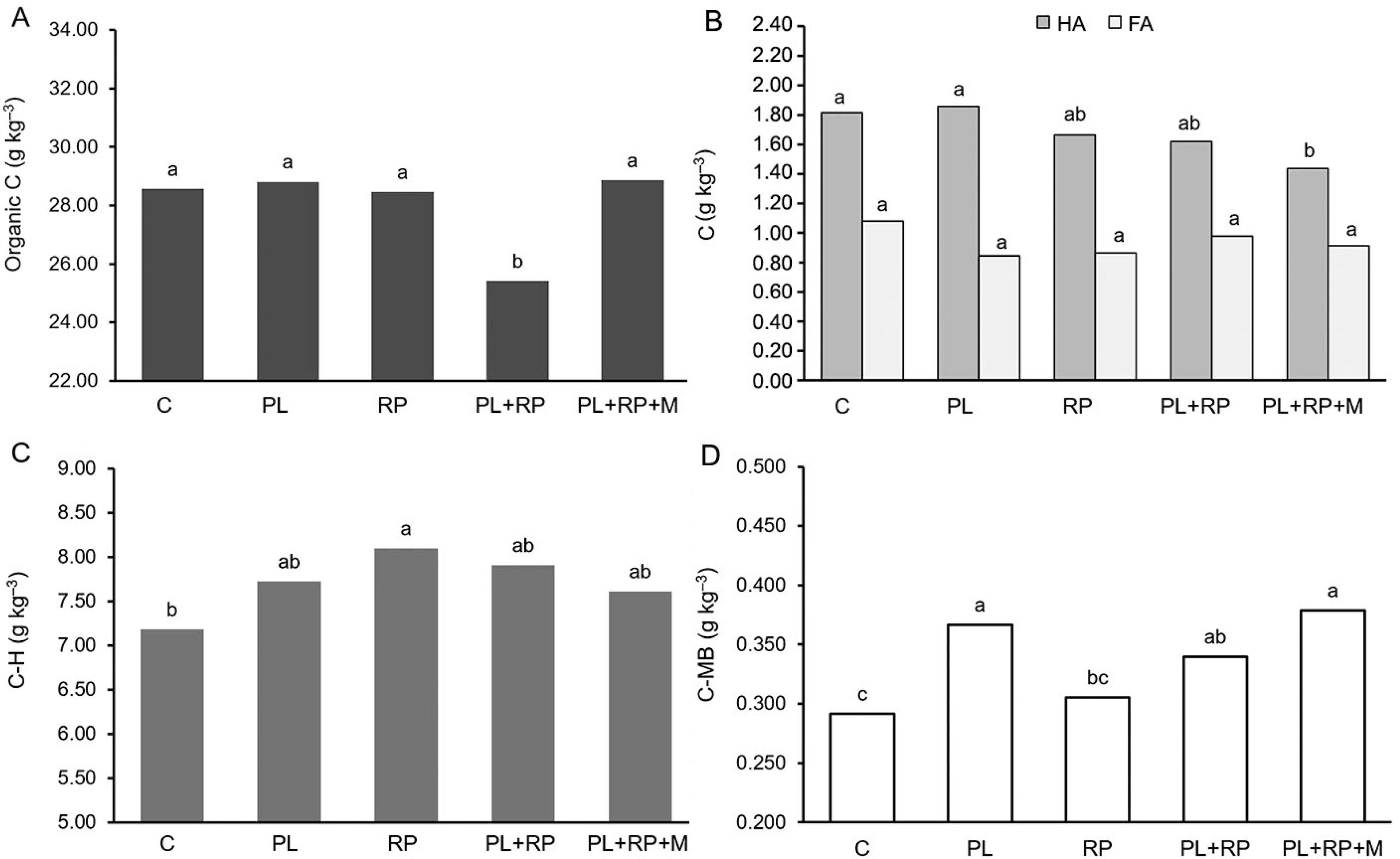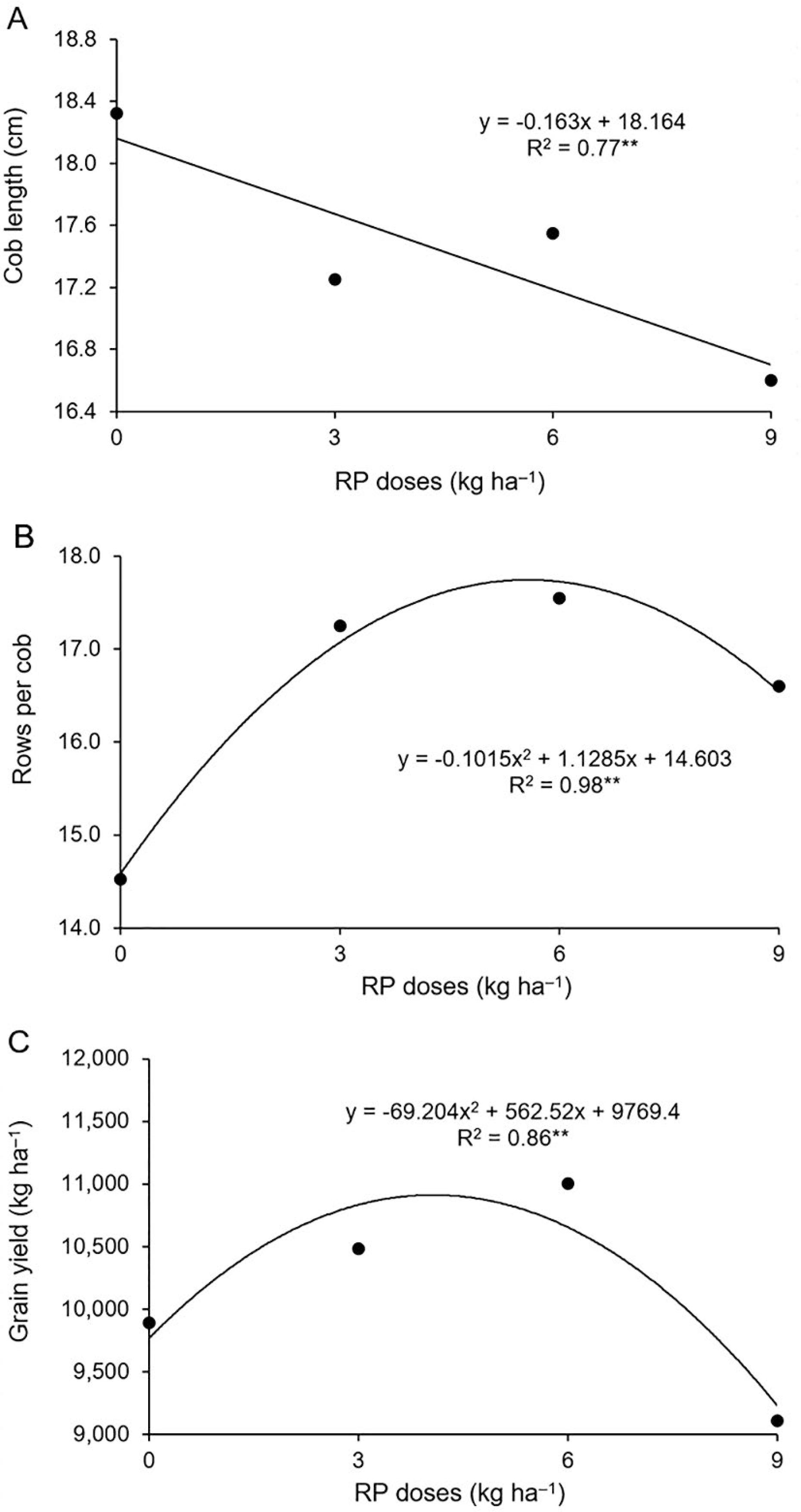ABSTRACT:
The acid release of phosphates from rock phosphates (RP) and the retention of ammonium by inorganic phosphates have been studied separately in composting; however, there is a gap in the knowledge of combined application of RP with organic residues and microorganisms. The objectives were to evaluate the combined application of fresh poultry litter (PL) with RP and P-solubilizing microorganisms (M) on soil organic matter pools, microbial biomass C (MB-C) and on whole-plant silage maize and grain yields. Two field experiments tested the effects of timing of applications of PL (8 Mg ha–1), RP (4 Mg ha–1) and microorganisms on soil organic matter pools, nutritional aspects and productive components of maize crop whole-plant silage. A second experiment evaluated the effects of RP doses (0, 3, 6 and 9 Mg ha–1) with a fixed dose of PL (8 Mg ha–1) on maize grains. Application of PL+RP decreased soil organic C, while RP alone increased the humin fraction C compared to the control. The MB-C in soil with PL and PL+RP+M increased in comparison to the control and the RP. The application of PL, based on an average of fall and spring, increased leaves + stem dry matter, while in the fall on its own, the highest cob yield was observed in the combination of PL+RP, showing synergistic effects. The best ratio of poultry litter to rock phosphate combination is 2:1 in the anticipated fall application on the maize silage crop or immediate application on the maize grain crops.
Keywords:
Zea mays; microbial biomass C; organic C; humin fraction C; integrated soil fertility




